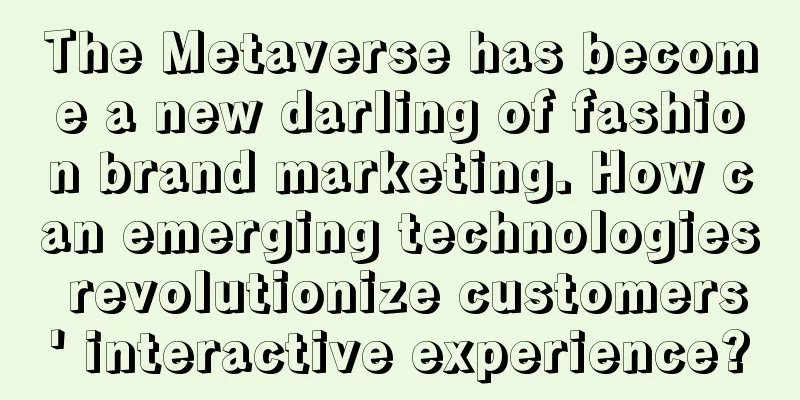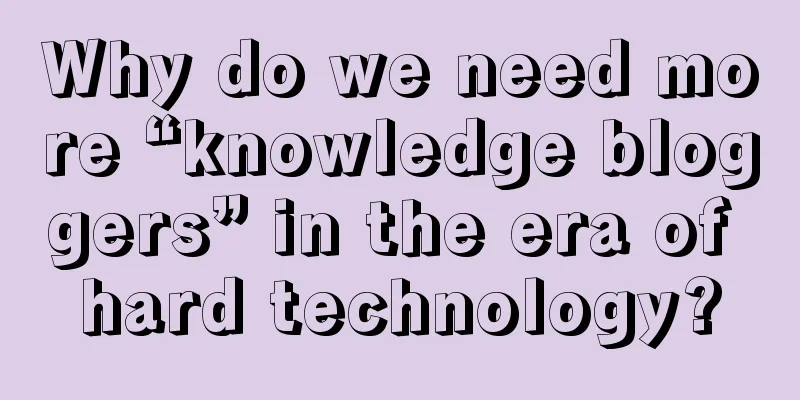The Metaverse has become a new darling of fashion brand marketing. How can emerging technologies revolutionize customers' interactive experience?

While it’s too early to tell, the Metaverse has emerged as a new frontier for brands to explore the boundaries of new technology and connect with customers in novel ways. According to a McKinsey study, 59% of consumers are very excited about moving their daily activities into the Metaverse. Virtual shopping experiences will be the early winners in this space, and the Metaverse will be able to immerse customers in new types of shopping experiences . As the digital landscape continues to expand, consumer-centric fast fashion brands are constantly on the lookout for cutting-edge solutions that can enhance their customers’ shopping experience. As the Metaverse continues to grow, it opens up a world of possibilities for brands looking to improve their customer engagement and data analytics efforts. The ability to track customer behavior and preferences in real time enables brands to fine-tune their product and marketing strategies over time. As Olga Dogadkina, co-founder of virtual store platform Emperia, explains, virtual shopping experiences in the Metaverse help enhance brands’ e-commerce strategies by adding layers of interactivity and user experience that can go beyond the in-store experience by personalizing and enriching the customer’s shopping journey . “A 2D website is just a tool to enable online purchases through a simple grid of images and text. It lacks customer journey, storytelling, and the ability to provide customer experience and product discovery,” Dogadkina said. Whether it’s through hosting virtual events or offering personalized shopping experiences, the emerging metaverse is poised to provide brands with a platform to truly connect with their customers. For high-end retailers, the virtual world offers an opportunity to showcase limited-edition products that can’t be found in the physical world . 1. The rise of immersive virtual retailThe Metaverse represents a shift in the way humans interact online, paving the way for more immersive experiences in all aspects of life, such as work, entertainment, and even fashion. Younger generations have adopted augmented reality (AR) technology to expect a level of utility beyond entertainment, and fashion brands in the Metaverse are responding. They are already showcasing the brand’s different collections in new ways, launching digital fashion shows and immersive experiences that completely draw viewers into the designers’ creative worlds. By adopting virtual reality (VR) and augmented reality (AR) technologies, brands can design digital spaces that closely resemble their physical stores . The result is that shoppers can browse virtual racks, "try on" clothing and interact with store associates in real time. Another exciting aspect of the Metaverse for fashion brands is that it provides a platform for companies to experiment with new business models based on interactions with their community. “Virtual stores enable retailers to bridge the gap between the transactional nature of e-commerce purchases and the personalized shopping experience that brands can cultivate in-store,” Dogadkina said. “Given the privacy, personalization, and inclusivity of virtual stores, we are seeing increased demand for these types of spaces from anyone from financial institutions to universities, entertainment venues, and more.” Dogadkina also explained how the recent Bloomingdale’s holiday virtual store, powered by the Empire platform, demonstrated how a brand can bring together multiple experiences under one roof while allowing each to showcase its own unique brand identity. “While well-known brands such as Nespresso, CHANEL and Ralph Lauren are present within Bloomingdale’s virtual world, they are each still uniquely positioned in their own space, increasing the user’s discovery journey while streamlining the shopping experience with a centralized checkout process and cohesive user navigation,” Dogadkina explained. With the ability to host interactive experiences like virtual games or challenges around their collections, fashion brands can foster a sense of community and engagement among their customers. These experiences enable customers to compete against each other, or collaborate towards a common goal of winning prizes and rewards. This not only increases customer engagement, but also helps foster brand loyalty . “Adding a layer of gamification can attract more Gen Z users, increase shopper-brand interaction and allow the latter to reward users meaningfully and increase loyalty, an issue most retailers struggle with today,” Dogadkina explained. Of course, she added, tracking users’ movements within these stores while understanding their shopping preferences, product affinities and shopping habits allows brands to further personalize the user experience. 2. Develop unique ways to interact with consumersAvatars have become an important aspect of the metaverse space, serving as a powerful tool for brands to deliver cutting-edge retail experiences . As more and more people, especially young people, invest more time in building their own virtual images online, direct-to-avatar (D2A) is rapidly becoming popular as the latest retail strategy in the digital field. Additionally, the versatility and customization options offered by avatars make them an ideal way to market a variety of digital goods, including clothing, looks, and accessories. Gucci is leading the way with its digital avatar clothing and accessories, and the Metaverse store “Nikeland” has received over 7 million visits to date, demonstrating its potential for businesses looking to reach virtual audiences. Yashar Behzadi, CEO and founder of the Synthesis AI platform, said this metaverse experience is blending the best parts of physical stores and traditional websites in a new, more immersive way. “ The Metaverse combines the convenience of online shopping with the ability to virtually experience products through immersive technology . Virtual goods, such as clothing skins for avatars, enable brands to cost-effectively test new designs and gather immediate consumer feedback,” said Behzadi. The Metaverse also allows fashion brands to reach a wider audience. At the inaugural Metaverse Fashion Week, multiple fashion brands showcased their designs, including Dolce & Gabbana, Etro, and Elie Saab. In response, social media platforms are exploring direct-to-consumer shopping options. For example, Instagram launched AR-based makeup try-ons, Snapchat launched Dress Up, a platform for retailers and brands to try on makeup, and TikTok recently launched TikTok Shop, allowing users to make purchases directly through the app. This could be a game-changer for the fashion industry, allowing brands to reach a new group of customers who are looking for a more sustainable and affordable way to stay fashionable while building a global following. Behzadi explained that virtual try-on technology allows consumers to realistically test the fit of clothes, providing brands with instant global reach . “In traditional brick-and-mortar stores, it takes months to plan, produce and distribute merchandise. With instant global reach, brands can quickly test multiple products and gather feedback on the popularity of items and features,” said Behzadi. Ivan Dashkov, head of Web3 at sportswear manufacturer Puma, believes that a significant advantage of leveraging the Metaverse is that brands can create immersive experiences that allow visitors to interact with the brand no matter where they are. “At Puma, we’re focused on creating engaging experiences. So it’s important for us to understand how much time people spend in those experiences and how many people purchase digital goods. With the advent of NFTs, digital items are becoming more and more prevalent in our lives. As a fashion brand, it’s imperative that we leverage all of these data points to figure out where and how to best serve our audience,” said Dashkov. The luxury NFT collection now offers digital and physical products, as well as exclusive access to events. For example, a package purchase includes physical and digital goods as well as admission to a haute couture fashion show. NFTs have the potential to foster long-term engagement and brand loyalty, making them a valuable asset for luxury brands . Owning an NFT becomes a privilege, enhancing the buyer’s luxury experience. During New York Fashion Week, Puma showcased its exclusive sneakers NFRNO and Fastroid through NFTs in their own mini virtual world experience called “Black Station,” which increased the value of the NFTs and tapped into the psychology of scarcity and limited editions. “Black Station enhances the consumer experience by letting customers interact with the product, experience it in 3D and see it on our ambassadors, like Neymar wearing it before the product ships. Enabling consumers to have these types of experiences in the Metaverse is a core part of our strategy in this space ,” said Dashkov. Dashkov explained that this is a dramatic shift from how Puma typically sells its products. “Typically, we design a product and then spend 12 to 18 months producing it, getting it to stores and selling it to consumers. With our Fastroid and NFRNO NFTs, the consumer buys the product and we know how much to produce before it’s even made. This is an interesting DTC business model that we will continue to experiment with in the future,” he added. 3. Brands face challenges in Metaverse marketingJeremy Dalton, U.S. metaverse technology leader at PwC, said that as with any new space, there is a learning curve to understanding the breadth and depth of the potential impact. “Currently, many brands lack a comprehensive understanding of the capabilities and demographics of the virtual world and are challenged as to how to leverage this new channel to drive greater engagement. Brands need to define the ‘why’ for their customers, answering questions about why this new experience is relevant to them,” said Dalton. In addition, he believes that brands need to make efforts in the following aspects:
“ The Metaverse has the potential to significantly disrupt traditional marketing models, blurring the lines between the real and the virtual, and creating a powerful channel for the future of retail commerce ,” Dalton said. “If retailers harness this power correctly, they can connect with consumers in every area of their lives.” 4. The Metaverse Means InteractionPuma’s Dashkov said we’ll soon see brands creating more and more metaverse experiences to provide points of interaction with the brand and its community. “The Metaverse makes brands more accessible. Not everyone can attend a Puma fashion show or shoe launch in person due to geographic restrictions, event capacity, scheduling conflicts, etc., but when you host something like that in the Metaverse, it breaks down a lot of barriers,” said Dashkov. “Also, the brand’s definition of a product will change. Therefore, brands entering the metaverse need to change the definition of their product in the metaverse .” Meanwhile, interoperability across platforms will also be critical to brands’ success in the metaverse, said Behzadi of Synthesis AI. “The metaverse is still in its early stages, and people are spending relatively less time on these new platforms compared to traditional channels. So, while promising, the metaverse has yet to reach the scale and velocity that can generate significant revenue for brands,” Behzadi said. Behzadi also said that some new experiences, including virtual product demonstrations, brand experiences, virtual events and concerts, and new social product promises, will drive consumers' shopping experience, making the emerging metaverse a new field different from traditional marketing. He added that a metric that may drive adoption is the total time and money required to create cross-platform assets and experiences. The original article was written by Victor Dey, and the Chinese content was translated by the MetaverseHub team. Please contact us if you need to reprint it. Author: MetaverseHub; Official Account: MetaverseHub |
<<: Douyin is creating an online supermarket, aiming to enter the comprehensive e-commerce industry?
Recommend
Will Shopee's cross-border business account be blocked? What should I do if Shopee stops accepting orders after placing a few orders?
With the continuous improvement of platform rules ...
To analyze indicator fluctuations, the data model should be built like this
In the world of data analytics, fluctuations in bu...
喜茶的「我佛持杯」如何爆火出圈?
Heytea's new co-branded product "Meditati...
Please note that this is the first Olympics where advertising is sold programmatically.
The Paris Olympics pioneered programmatic advertis...
Xiaohongshu's spotlight advertising didn't convert? Remember these 15 operational experiences
Many brands have encountered the problem of low co...
How many products does Wish list in a day? What are the rules?
There are many cross-border e-commerce platforms n...
Merchants are in trouble, Li Jiaqi is caught in the crossfire, and only JD.com is taking advantage of the situation?
The annual Double 11 battle has begun again. Let’s...
How do cross-border e-commerce sellers pay taxes? What are the export taxes?
We all know that cross-border e-commerce is develo...
Is the shipping fee on Shopee Taiwan high? How is it calculated?
Shopee has many sites, and the Taiwan site is the ...
How to register a wish store? What should I pay attention to when registering a wish store?
Wish is a popular mobile e-commerce platform that ...
Detailed explanation! One of the top ten analytical models: Funnel model
In the field of data analysis, the funnel model is...
There has never been a simple and crude rule in the Internet industry.
Everything has its own rules, so are there any rul...
The new type of "coffee blind box" is becoming popular: daily sales of more than 10,000, it depends on luck what you get?
This article starts with the recently popular &quo...
How to set up Amazon payment method? What payment method to use?
To open a store on the Amazon platform, merchants ...
Luckin Coffee co-branded "The Story of Rose", and won again
This article analyzes the successful case of Lucki...









